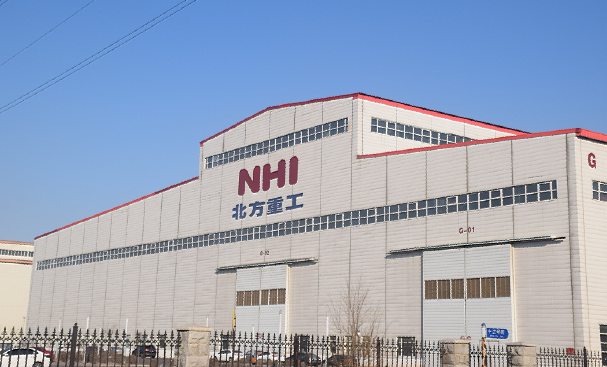Die steel is a steel used to make molds such as cold die and hot forging die. It is the main processing tool for manufacturing parts in industrial sectors such as machinery manufacturing, radio instruments, motors, and electrical appliances. In order to make the die steel perform better, we need to cool it. There are five main types of quenching process cooling methods:
1. Die steel single liquid quenching method
The mold steel or parts are heated to austenitizing and then quenched into water, oil or other cooling medium, and cooled for a certain period of time (cooled to a region below the pearlite type transition temperature or martensite transformation temperature) to take out the mold steel air cooling. Since the mold steel cooling process is completed in a single cooling medium, it is called a single liquid quenching method.
2, mold steel two-liquid quenching method
As the name implies, the quenching and cooling process of the die steel is done in two cooling media (most commonly water, oil). The ideal state needs to be: rapid cooling in the pearlite transformation region and slow cooling in the martensite transformation region.
Specific practice: the mold steel or parts heated to the austenitizing temperature are first quenched into the first medium (usually water or saline solution) in the high temperature zone to suppress the pearlite transformation of the supercooled austenite. When cooled to about 00 ° C, quickly remove the second medium (usually oil) that is transferred to the low temperature zone and slowly cooled.
Since the martensite transformation is carried out under milder cooling conditions, it can effectively alleviate or prevent deformation and cracking, which is commonly referred to as water quenching and oil cooling. This method requires a high level of skill. Abbreviation: first water, after oil, then air.
3, die steel spray quenching method
Large-scale complex, especially thick and thin workpieces and die steels, in order to avoid excessive quenching stress during cooling, control the cooling rate of different parts of different stages of the cooling process. There are various ways of spraying liquid (water or aqueous solution, spray (compressed air and water sprayed to different parts of the part by atomization), gas quenching, etc.
Its advantages: it can control different media or different flow, pressure to control and adjust the cooling rate of each temperature zone; or change the number and position of different nozzles; The most popular vacuum high pressure gas quenching in mold heat treatment is currently.
4. Die steel grade quenching method
This is one of the common quenching methods for mold parts. The specific process is to quench the mold steel or workpiece heated to the austenitizing temperature into a cooling medium (usually a salt bath) whose temperature is near the martensite transformation temperature, and stay for a period of time, so that the surface and the center temperature of the workpiece gradually become After the consistency, the air cooling is taken out, and the martensite transformation is completed at a lower cooling rate, which can significantly reduce the deformation and improve the toughness of the mold steel.
There are two choices for the temperature of the die steel quenching. One is to take the Markov transformation starting temperature (Ms point) of the steel of the workpiece to be processed by 10~30 °C; the other is to select 80~100 °C below the Ms point. The residence time of the classification should also be well mastered. If the temperature is too short, the temperature is not uniform enough to achieve the purpose of classification quenching; if it is too long, non-martensitic transformation may occur to reduce the hardness.
5, die steel isothermal quenching method
The mold steel workpiece heated to the austenitizing temperature is quenched into a hot bath at a temperature slightly higher than the Ms point of the quenched steel grade, and the phase transition is completed to obtain the lower bainite structure or the lower bainite and Markov. Body mixed tissue. The purpose of this method is to alleviate deformation and cracking, and the quenching stress is small. Has similar strength and toughness to tempered martensite.
Avoiding the deformation and cracking of the die steel during use, it is also necessary for the cooling of the die steel quenching process, which will make the die steel not easy to deform, have suitable viscosity under the use conditions, and are non-flammable and explosive. Non-toxic and so on.

Concerned about surprises
Label: What are the cooling methods for mold steel quenching process?
Previous: Is it feasible to use the gear reducer of the reducer? Next: Brief analysis of the basic performance of the electronic transformer
Steel Structure Warehouse has the
advantages of high area usage; fast installation; long span, low cost and
recyclable etc, and widely used around the world.Own professional advanced equipment,such as Steel Structure automatic welding lines,color steel molding lines and production lines for the C-section and Z-section steel purlins etc.Our professional engineer and design team will provide the steel structure drawings for you.Please just let me know the informations as below.
1. Measurement: length, width, eave height
2. Area and local climate: wind speed, snow load and earthquake magnitude etc.
3. Materials of the roof and the wall you want,usually it can be corrugated steel sheet or sandwich panel.
4. If need crane. If yes, please tell me the max lifting weight and max lifting height.
5. Any other requirements,please also inform us.
6. If you have your own drawings,please feel free to send us for the detailed quotation.

Steel Structure Warehouse
Steel Structure Warehouse,Low Cost Steel Structure Warehouse,Prefabricated Steel Warehouse,Steel Structure Warehouse Workshop
Zhongda Steel Structure , https://www.zhongdametal.com